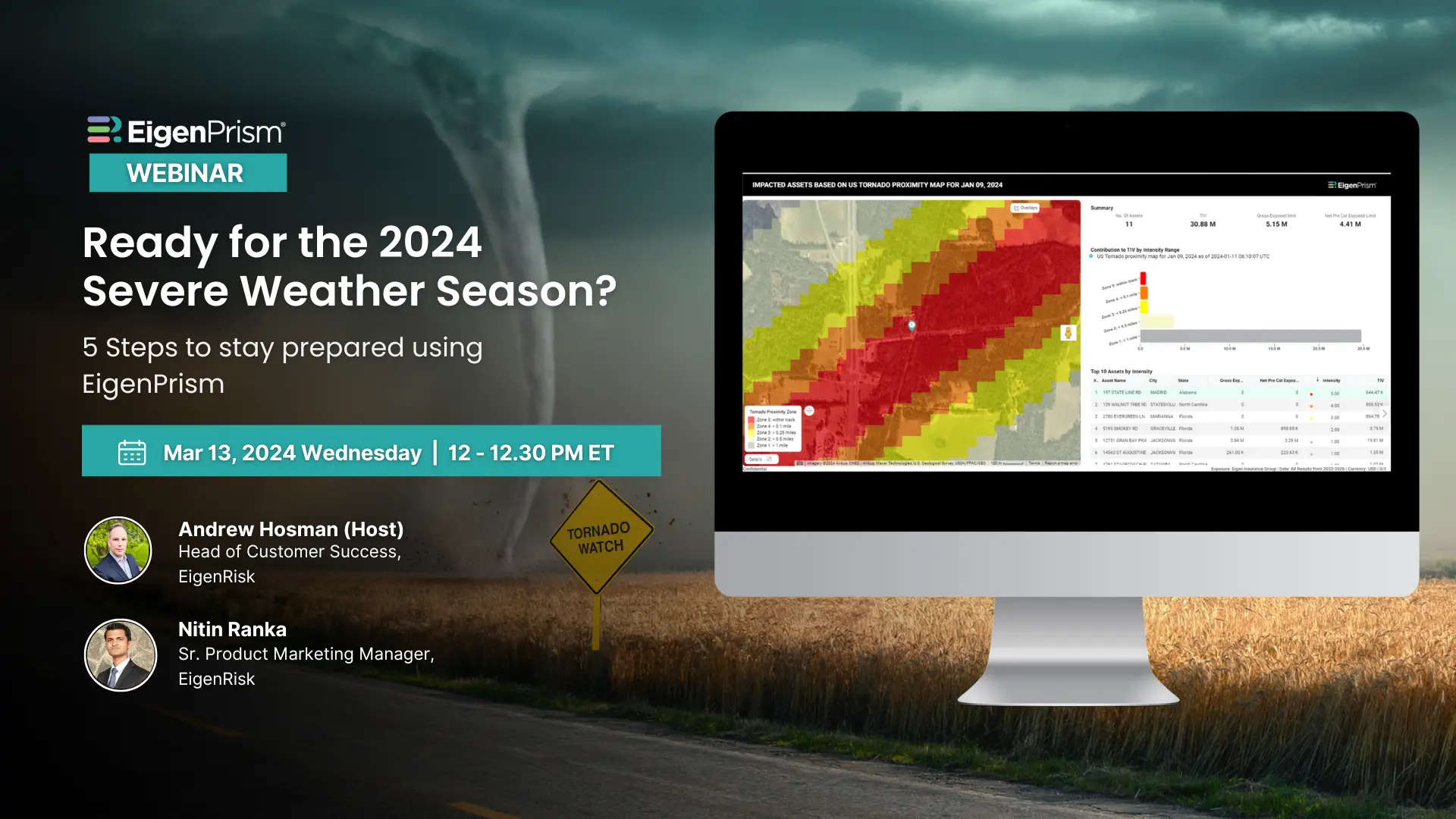Severe Weather Season 2024: Prepare Now with EigenPrism
Swiss Re reports that in 2023, severe convective storms were the primary driver of natural catastrophe losses. 17 severe thunderstorms led the year’s insured losses to reach a new all-time high of $60 billion.
This period witnessed some of the most extreme and devastating thunderstorm events in recent times.
Let’s Look at Two Major Thunderstorm Events from Last Year:
Tornado Outbreak on March 24, 2023
- An unusual tornado that struck Rolling Fork, Mississippi, tore through the town around March 24, 2023 and left the town devasted. It took 25 lives and caused extensive destruction to buildings, homes, and infrastructure across the area as it moved from southeast to northeast directly through the town.
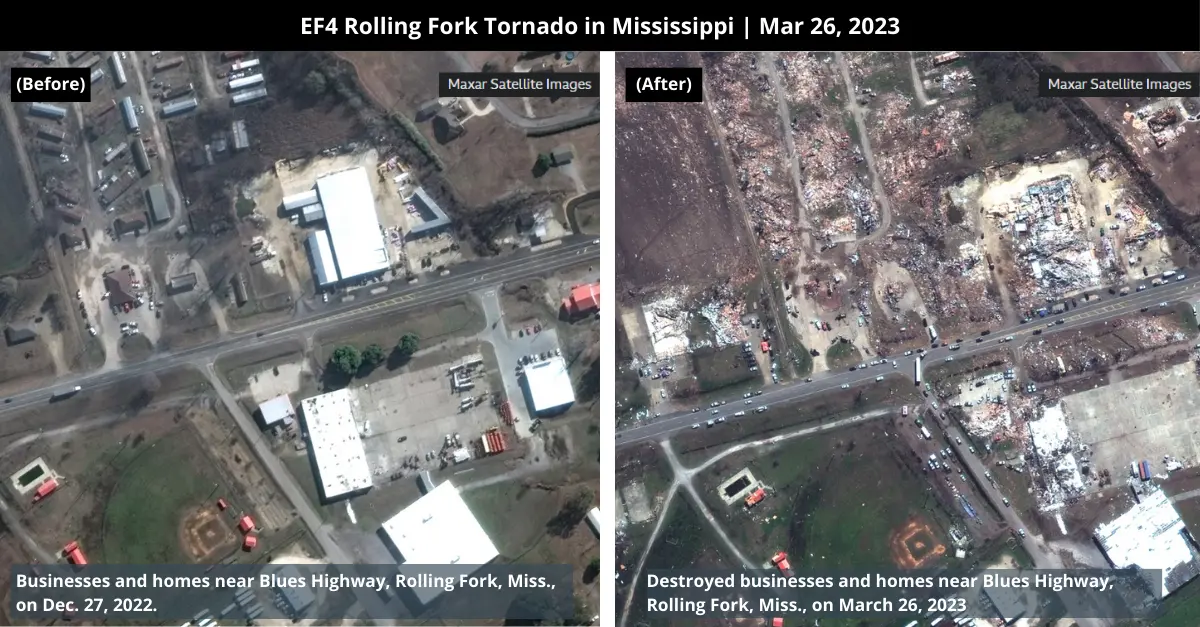
- EigenAlerts users with assets at risk were notified when the NWS released its day 1 outlook on Mar 24, 2023.

- After the event, EigenPrism users also made use of the post-event damage surveys from NWS.

- Subscribers of Canopy Weather, a premium dataset on EigenPrism, were able to take advantage of the proximity zone footprints, which were released in just a few hours.
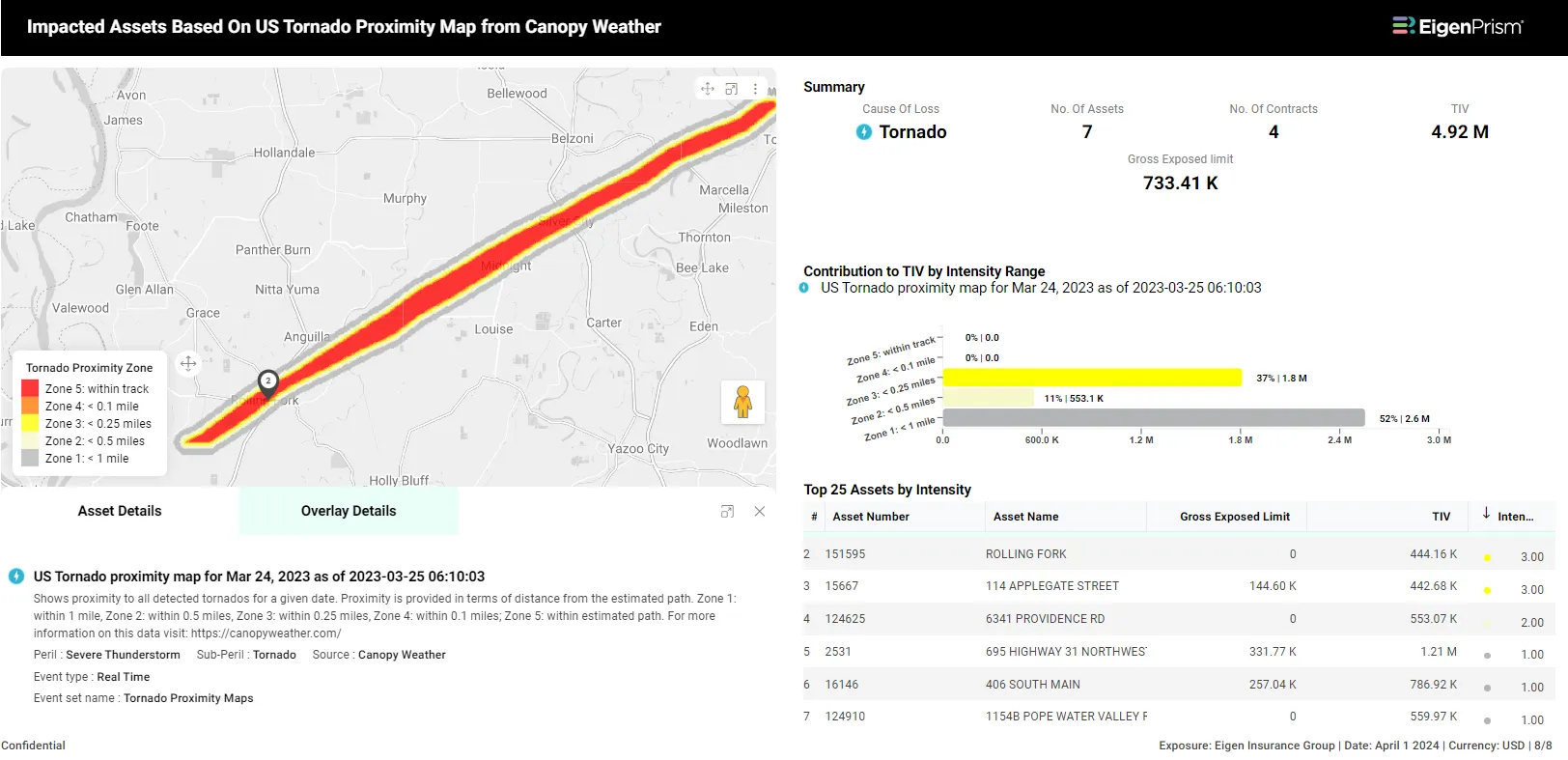
Hail Event on April 28, 2023
- On April 28, 2023, a severe hailstorm in San Antonio, Texas, became another significant marker of the year’s catastrophic weather events. This massive storm led to an estimated $1.4 billion in insured losses.
- EigenAlerts users with assets at risk were notified when the NWS released its day 1 outlook on Apr 27, 2023.

- After the event, EigenPrism users were able to make use of the following post-event footprint.
1. 24-hr hail reports ending April 29 from NOAA.

2. 24-hr-Hail Swath MESH Ending 28 April from NSSL.
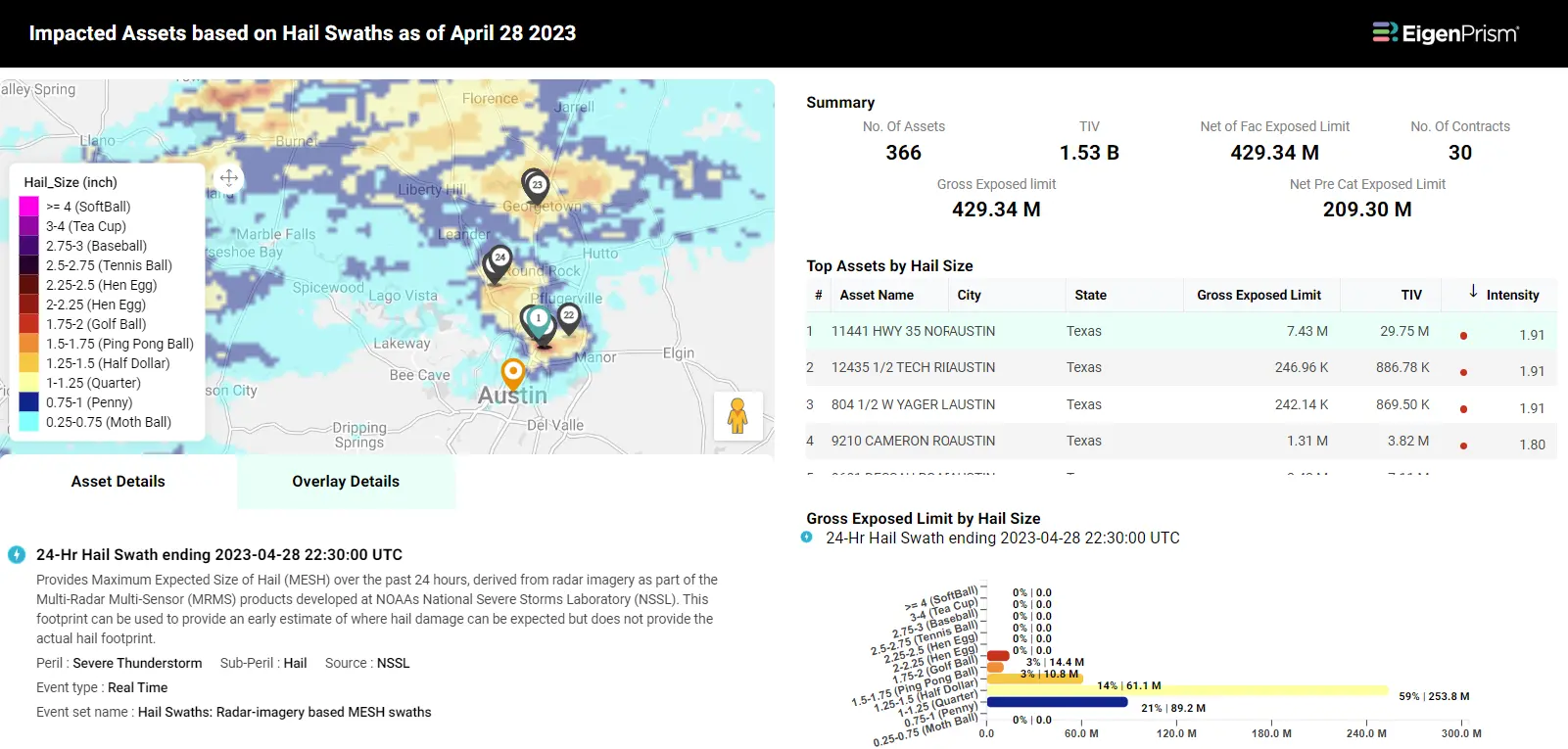
How Do EigenPrism Users Prepare for the Upcoming Severe Weather Season
1. Ready Exposure Data
Your analytics are only as good as the accuracy of your data; therefore, it’s essential to ensure your data is complete and up-to-date. Here’s what EigenPrism users do:
Update Data
- Maintain Data Relevance and Accuracy: Property values and other variables can change over time. If you utilize Schedules of Values (SoVs), regularly check for data changes, and import your SoVs again. This help center article can guide you through the process of importing an SoV quickly.
- Leverage APIs for Efficiency: Our APIs automate the entire process of exposure data import and update. Discover how to use APIs to keep your exposure data refreshed and aligned with the latest updates.
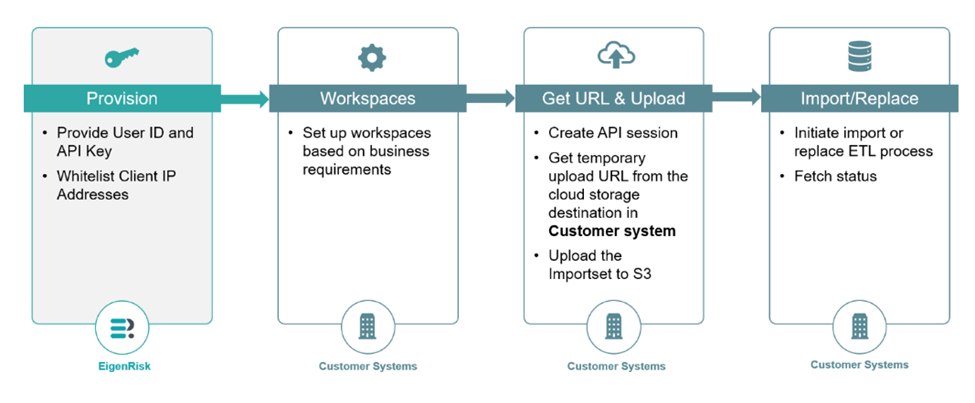
Improve Data Quality
Ensuring high data quality is crucial when importing data into the system. Here’s how EigenPrism users enhance their data quality.
- Leverage Geocoding: Geocoding lays the foundation for all subsequent activities. Incorrect geocoding of assets can lead to inaccurate analysis results, missed critical alerts, or false alerts for assets not affected by events. Utilize EigenPrism’s geocoding capabilities to ensure accurate geocoding of your assets.
- Utilize Data Augmentation: By employing our augmentation capabilities and leveraging EigenPrism’s partnerships with data providers like HazardHub and Tensorflight, you can keep your COPE (Construction, Occupancy, Protection, and Exposure) data current. Additionally, Including replacement cost data during augmentation can be very useful during loss adjustment.
- Check your data quality: If your exposure data is in the system, use the exposure stratification analysis to assess data completeness at a glance.
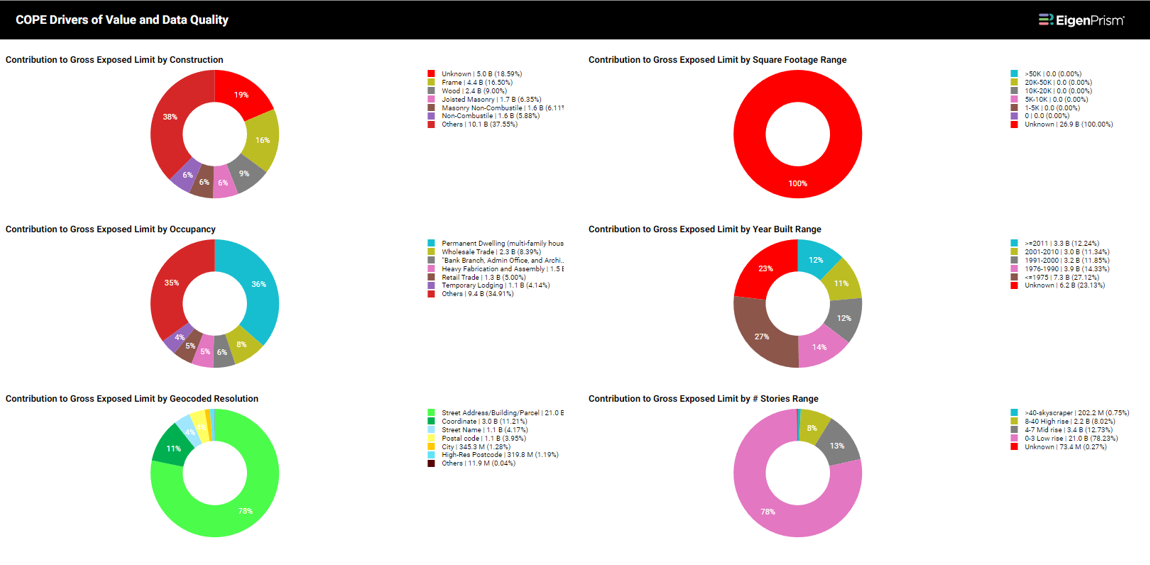
If you discover any discrepancies or unknowns in these charts, this is the perfect time to update your data. Utilize our geocoding and data augmentation services to enhance accuracy.
Click here to check the data quality of your exposure immediately.
2. Prime the Pump
Waiting for the first catastrophe to occur is not an option. Proactivity is essential in disaster preparedness. Here are key steps to ensure you’re ready ahead of time.
Monitor Accumulations
Identify critical accumulation hotspots automatically with spider analysis. This analysis type allows for a precise understanding of the concentrations of risk in your portfolio. You can review the accumulations and can also further delve deeper into any specific concentration. Learn more about how to use a spider analysis.

Run Historical Scenarios
Evaluate your exposure in context of historical events using public sources such as the National Weather Service (NWS). Below is an example of a historical footprint illustrating tornado activity from 1950 to 2015.
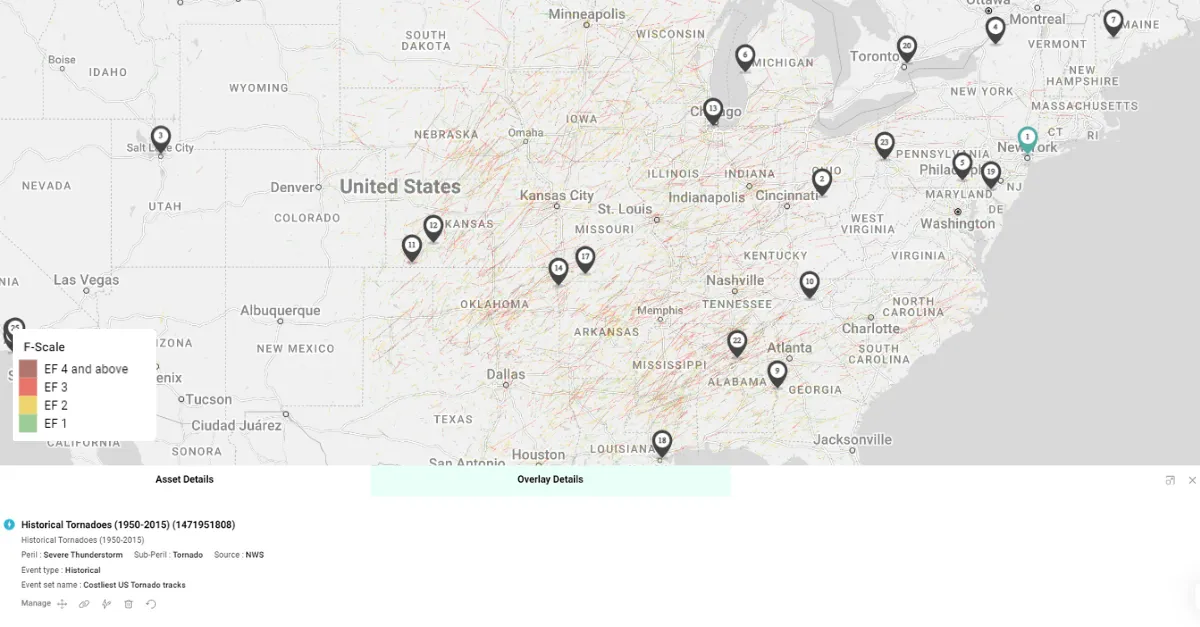
Click here to run this analysis on your exposure.
Create What If Scenarios Using Historical Events
Move historical footprints to create what-if scenarios, providing insights into potential future impacts based on past events. Below is an example of us moving the EF4 Rolling Fork tornado damage survey from NOAA.
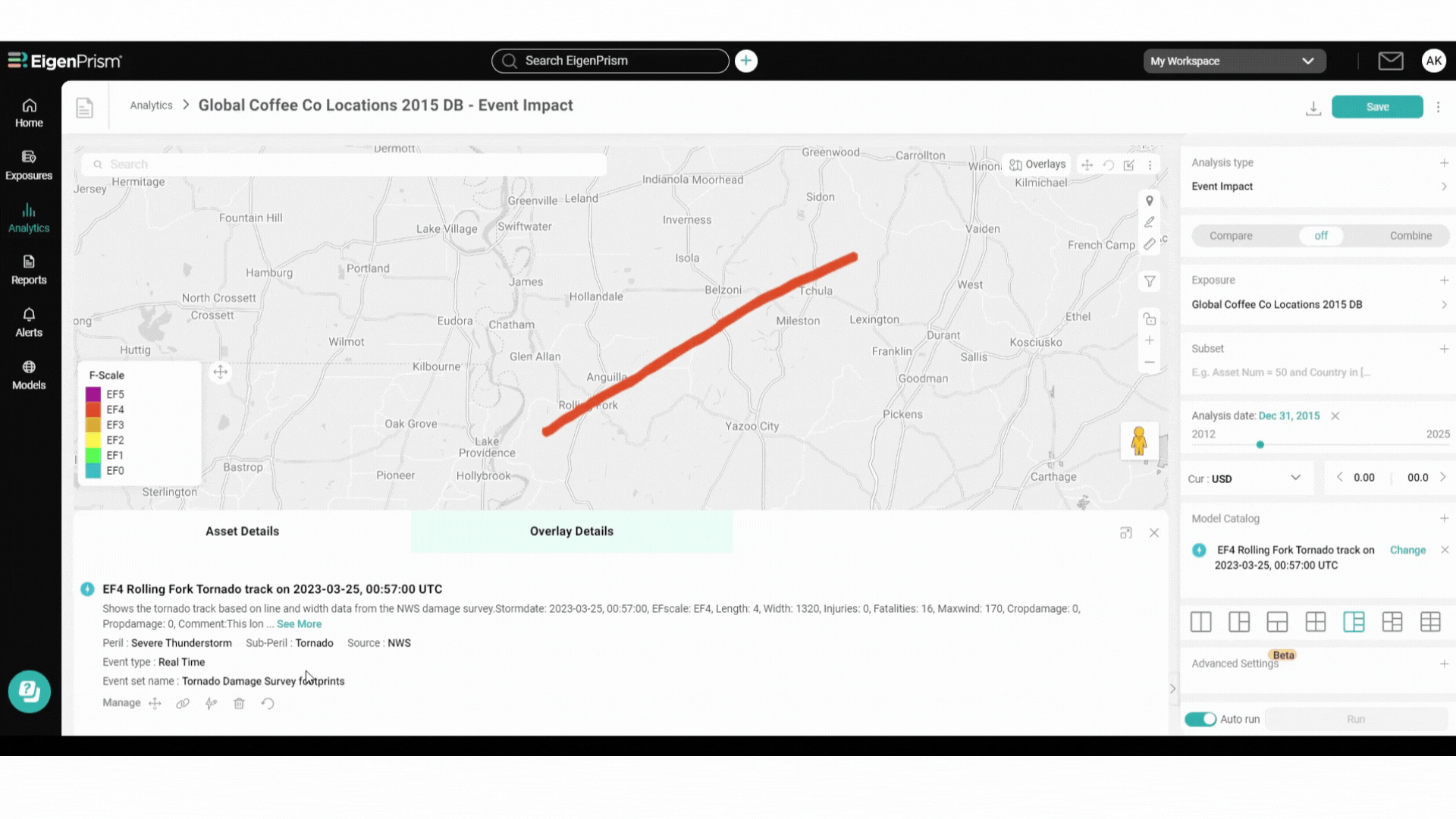
Leverage the Report Library
EigenPrism users benefit from our extensive collection of report templates that generates multi pager reports at the click of a button. Access the report library easily by clicking the ‘Quick Add’ button on the homepage and selecting ‘Reports.’
Two report templates that are relevant for the severe weather season are:
This report provides the annual occurrence frequency of tornadoes of strength EFO and higher, approximately 25 miles of historical tornado track. These frequencies are based on an analysis of historical data sourced from NOAAs Storm Prediction Center (SPC) for three time — periods: 5 years, 10 years, and 73 years, each ending in 2022.
This report provides the average number of days per year, for which there were one or more hails of size greater than 1 inch, within 25 miles of historical hail point. These average days are based on analysis of historical data sourced from NOAA’s Storm Prediction Center (SPC) for three time periods: 5 years, 10 years, and 68 years, each ending in 2022.

Run Frequency Maps
Utilize frequency maps based on historical data to gain insights into the annual occurrence rates of hail or tornadoes. These maps give you an understanding of the average annual occurrence of events based on the defined time-frames and the intensities of the events. Viewing these in context of your exposure data allows you to get a better understanding of your risk.

Click here to run a hazard overlay analysis. You will find these events in the hazard tab of the model catalog.
Set and Review Moratorium Criteria
Leverage granular intelligence to set and review underwriting moratoriums. This case study outlines how Vave was able to integrate real-time catastrophe event notifications and analytics into the technology and Vave’s automated underwriting process. This enabled them to automate issuing underwriting moratoriums during a catastrophe and ensured that underwriting resumed post-event – entirely without manual intervention.

3. Set EigenAlerts
Monitor observed and forecasted events, and receive notifications of events that impact your assets effortlessly with a single click, using EigenAlerts.
Set EigenAlerts
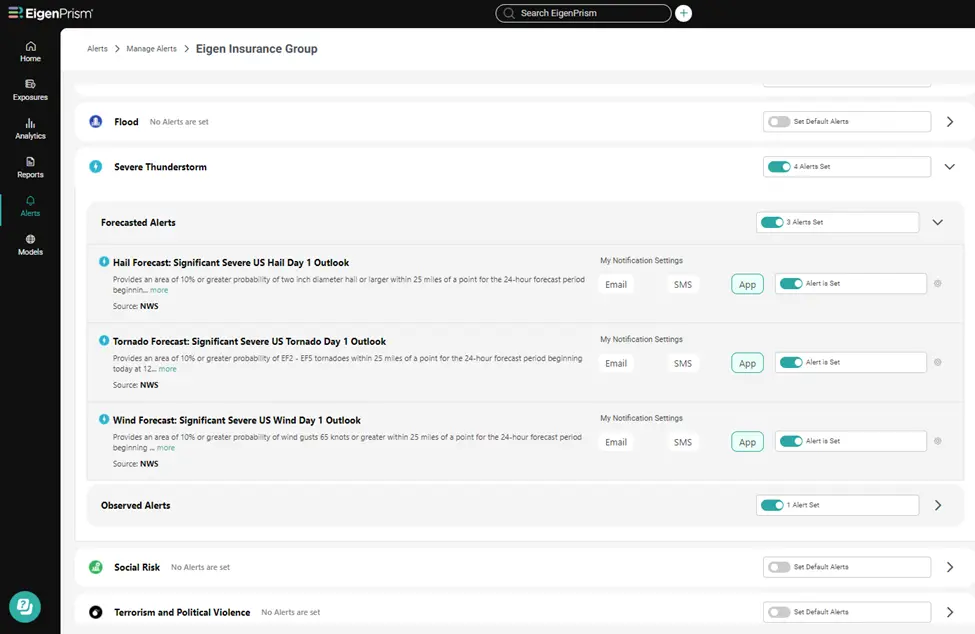
EigenPrism users customize their alerts to be both highly targeted and actionable. By configuring alert thresholds and notification frequencies, they ensure their attention is focused solely on events directly impacting their assets.
Set your alerts now.
Check Out Our Webinar On Severe Weather Preparedness
We conducted a webinar on Severe Weather Preparedness where we covered the above topics and more:
- Keep Your Exposure Data Current with quality!
- Overlay Historical Data to Find the Most Exposed Assets
- Detect Accumulation Hotspots
- Assess Multiple Perspectives of Impact From 30+ Data Partners
- Cut Through the Noise – Set Actionable Alerts
So, if you are more inclined towards viewing a video version of the above, you can request us for a recording.


